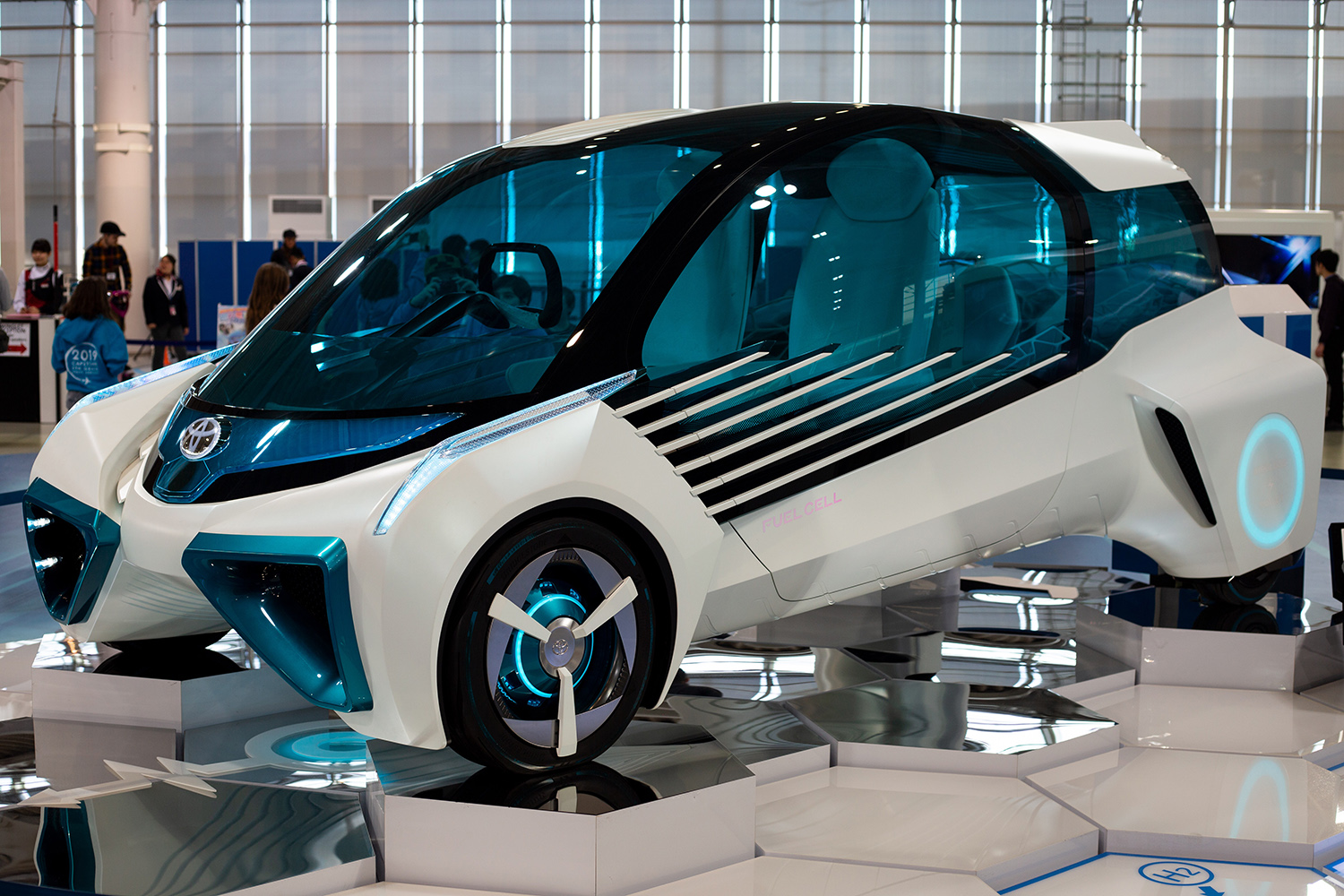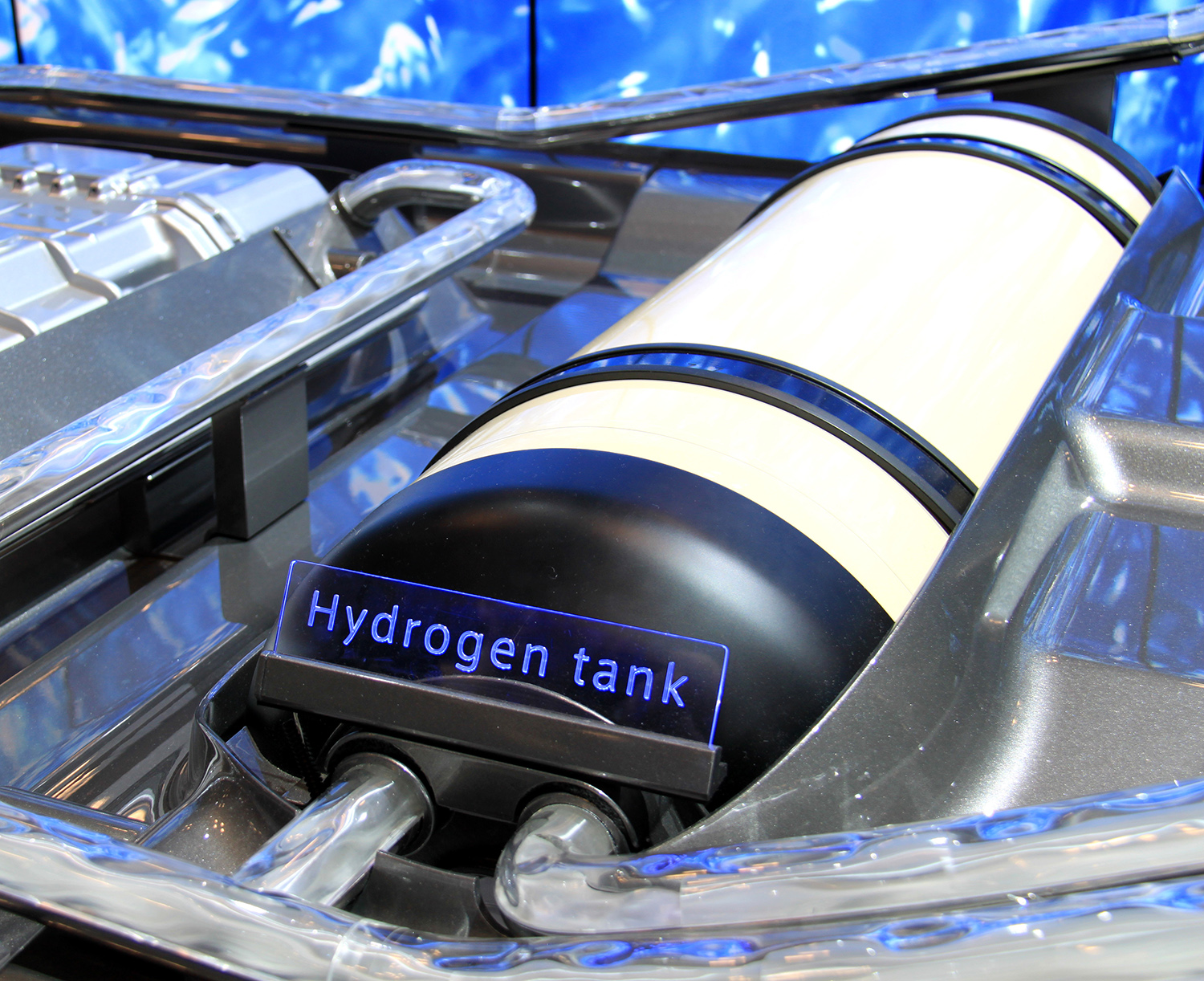Carbon-free hydrogen: how to go from gray to green?
The industrial roll-out of hydrogen production only makes sense if it emits little or no carbon dioxide. Researchers at IMT schools are working on various alternatives to the use of fossil fuels, such as electrolysis and photocatalysis of water, plasma pyrolysis of methane, and pyrolysis and gasification of biomass.
Currently, the production of one ton of hydrogen results in 12 tons of CO2 emissions and 95% of the world’s hydrogen is produced from fossil resources. This is what we call gray hydrogen. A situation that is incompatible with the long-term roll-out of the hydrogen industry. Especially since, even if the CO2 emitted by current processes can be captured in a controlled environment, fossil resources will not be able to meet the government’s ambitions for this energy. It is therefore essential to develop other modes of “carbon-free hydrogen” production. Within the Carnot H2Mines network, researchers from the different IMT schools are working on processes that could turn the color palette of today’s hydrogen to green.
From blue to green
One process in line with the French government’s plan published last September is water electrolysis. This consists in separating an H2O molecule into hydrogen and oxygen using an electricity supply. This is a carbon-free solution, provided the electricity comes from a renewable source. But why turn an already clean energy into gas? “Hydrogen enables the storage of large amounts of energy over the long term, which batteries cannot do on a large scale to power an entire network,” explains Christian Beauger, a researcher in materials science at Mines ParisTech. Gas therefore partly responds to the problem of intermittent renewable energies.
Researchers therefore want to improve the performance of electrolyzers in order to make them more competitive on the market. The goal is to find the best possible balance between yield, lifespan and reduced costs. Electrolyzers are made up of several electrochemical cells containing two electrodes and an electrolyte, as in the case of fuel cells. There are three main families: alkaline solutions with liquid electrolyte, polymer membrane technologies (PEM) and high-temperature systems based on ceramic solid oxide (SOC). Each presents its own problems.
At Mines ParisTech, Christian Beauger’s team is seeking to increase the lifespan of PEM electrolyzers by focusing on the materials used at the anode. “We are developing new catalyst supports in the form of metal oxide aerogels which must be electronically conductive and capable of resisting corrosion in a humid environment, at a temperature of 80°C and subjected to potentials often higher than 2 volts“, says the researcher. Another major problem also affects the materials: the cost of an electrolyzer. The catalyst present on PEM electrodes is iridium oxide, a compound that is too expensive to encourage widespread use of future high-power electrolyzers. For this reason, researchers are working on catalysts based on iridium oxide nanoparticles. This reduces the amount of material and thus the potential cost of the system.
Shedding light on photocatalysis
In the laboratory, an alternative using solar energy to break water molecules into hydrogen and oxygen is also being considered. This is photocatalysis. The semiconductors used can be immersed in water in powder form. Under the effect of the sun’s rays, the electron-hole pairs created provide the energy needed to dissociate the water molecules. However, the energy levels of these charge carriers must be controlled very precisely to be useful.
“We form defects in materials that introduce energy levels whose position must be compatible with the energy required for the process,” explains Christian Beauger. This ultra-precise work is delicate to carry out and determines the efficiency of photocatalysis. There is still a long way to go for photocatalysts, the most stable of which hardly exceed 1% in efficiency. But this method of hydrogen production should not be dismissed too quickly, as it is cheaper and easier to set up than a system combining a renewable energy source and an electrolyzer.
Turquoise hydrogen using methane pyrolysis
At Mines ParisTech, Laurent Fulcheri’s team, which specializes in plasma processes, is working on the production of hydrogen not from water, but from the pyrolysis of methane. This technique is still little known in France, but has been widely explored by our German and Russian neighbors. “This process requires electricity, as for the electrolysis of water, but its main advantage is that it requires about seven times less electricity than water electrolysis. It can therefore produce more hydrogen from the same amount of electricity,” he says.
In practice, researchers crack molecules of methane (formula CH4) at high temperature. “To do this, we use a gas in the plasma state to provide thermal energy to the system. It is the only alternative to provide energy at a temperature above 1,500°C without CO2 emissions and on an industrial scale,” says Laurent Fulcheri. The reaction thus generates two valuable products: hydrogen (25% by mass) and solid carbon black (75% by mass). The latter is not to be confused with CO2 and is notably used in tire rubber, batteries, cables and pigments. The carbon is thus stored in the materials and can theoretically be recycled ad infinitum. “The production of one ton of carbon black by this method avoids the emission of 3 tons of CO2 compared to current methods”, adds the researcher.
This process has already proven itself across the Atlantic. Since 2012, researchers at Mines ParisTech have been collaborating with the American start-up Monolith Materials, which has developed a technology directly inspired by their work. Its location in Nebraska is not insignificant, as it gives it direct access to wind energy in the heart of the corn belt, a major agricultural area in the United States. The hydrogen produced is then transformed into ammonia to fertilize the surrounding corn farms.
Although the machine is working, the research of Laurent Fulcheri’s team, a major player in the start-up’s R&D, is far from over. “Hydrogen production is the simplest task, because the gas purification processes are fairly mature. On the other hand, the carbon black produced can have drastically different market values depending on its nano-structure. The objective is now to optimize our process in order to be able to generate the different qualities of carbon black that meet the demands of consumer industries,” says the researcher. Indeed, the future of this technology lies in the short-term valorization capacities of the two co-products.
Biomass processing: a local alternative
At IMT Mines Albi, Javier Escudero‘s team is working on thermochemical processes for the transformation of biomass by pyrolysis and gasification. Organic waste is heated to high temperatures in a reactor and converted into small molecules of synthesis gas. The hydrogen, carbon monoxide, methane and CO2 thus produced are captured and then recombined or separated. For example, the CO2 and hydrogen can be used to form synthetic methane for use in natural gas networks.
However, a scientific issue has yet to be solved: “The synthesis gas produced is always accompanied by inorganic molecules and large organic molecules called tars. Although their concentration is low, we still require an additional gas purification stage,” explains Javier Escudero. The result is an increase in processing costs that makes it more difficult to implement this solution on a small scale. The researcher is therefore working on several solutions. For example, the exploration of different catalyst materials that could accelerate certain reactions to separate molecules from waste, while eliminating tars.
This approach could be envisaged as a form of local energy recovery from waste. Indeed, these technologies would enable a small and medium-scale territorial network with reactor sizes adapted to those of the collection centers for green waste, non-recovered agricultural residues, etc. However, there is also a need to clarify the regulations governing this type of facility. “For the moment, the law is not clear on the environmental constraints imposed on such structures, which slows down their development and discourages some manufacturers from really investing in the method,” says the researcher.
There is no shortage of solutions for the production of carbon-free hydrogen. Nevertheless, the economic reality is that in order to be truly competitive, these processes will have to produce hydrogen cheaper than hydrogen from fossil fuels.
By Anaïs Culot


